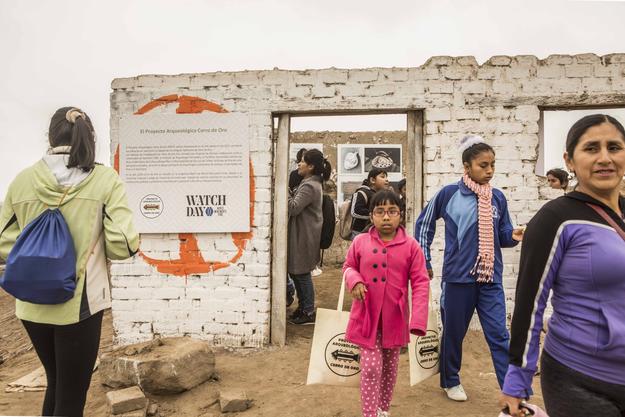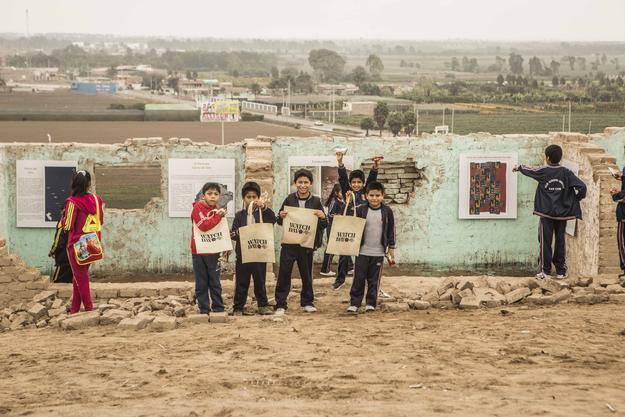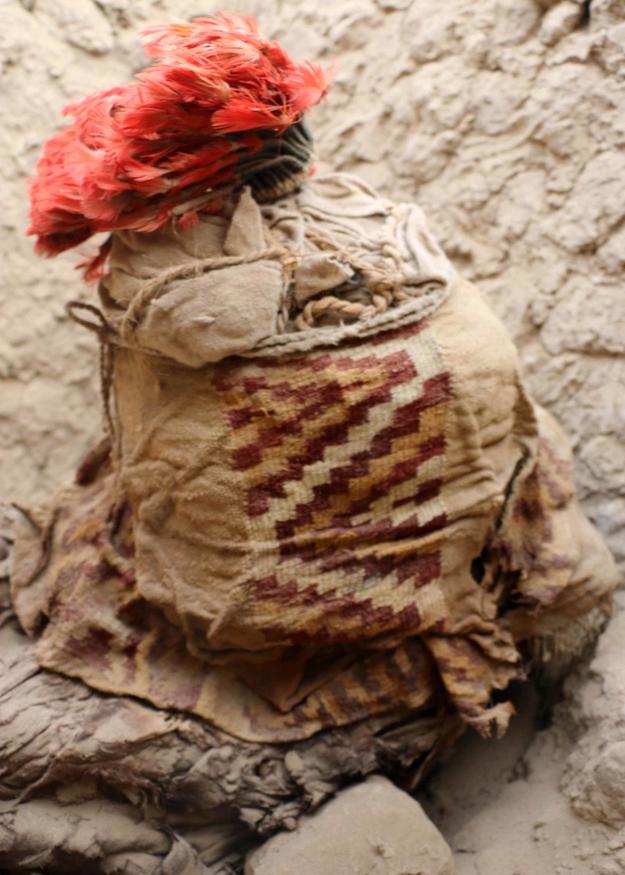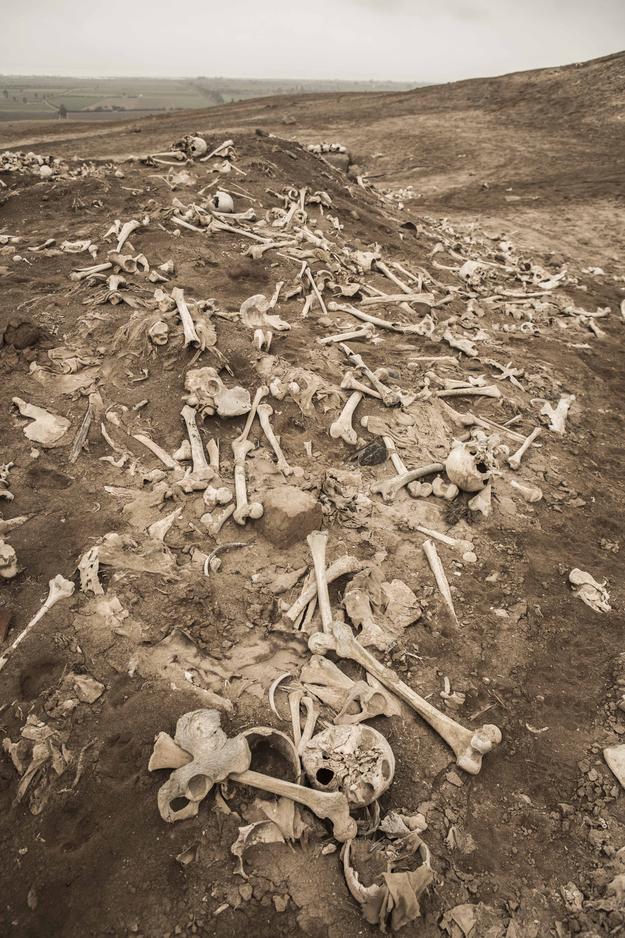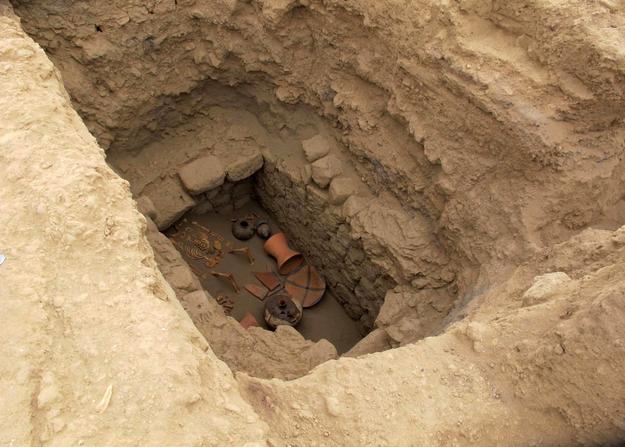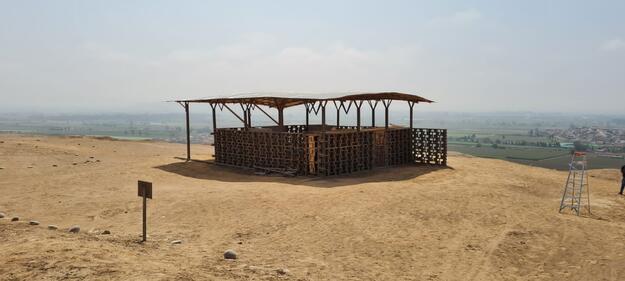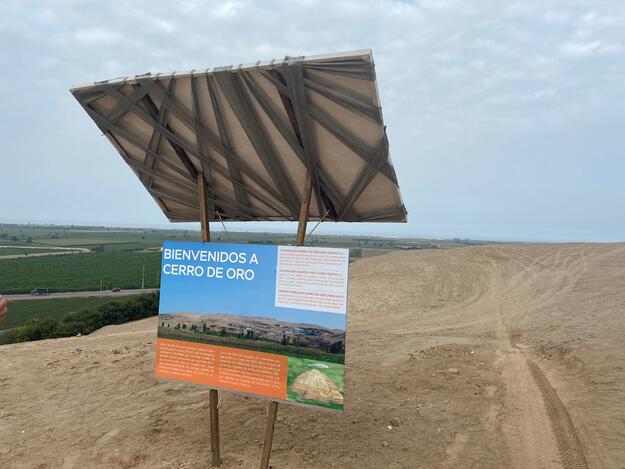Cerro de Oro
A Monumental Archaeological Zone
Perched atop a rocky hill just 140 km south of Lima, in the Cañete Province, the 150-hectare archaeological site of Cerro de Oro overlooks the Pacific Ocean and is surrounded on all sides by agricultural land. Most of Cerro de Oro remains unexplored, yet past excavations have revealed three distinct periods of occupation over a span of a thousand years. The earliest remains are of a settlement with a vast network of monumental adobe buildings, including houses and funerary structures, dating back to 550-850. Burials containing elaborate funerary bundles with textiles establish a clear link with highland Wari society (850-950) and findings of a later cemetery and residential complex signals Inca occupation of the area from c. 1100 until the Spanish Conquest.
2018 World Monuments Watch
Declared a Monumental Archaeological Zone by the Peruvian Ministry of Culture in 2006, Cerro de Oro is as historically significant as better-known archaeological sites like Chan Chan and Huaca de la Luna. Intensive looting, disinvestment, and illegal encroachment on the land threaten the site and the archaeological remains, leading to the site's inclusion on the 2018 Watch. Less than two hours away from the historic center of Lima, Cerro de Oro has the potential to be incorporated into the region’s tourism offerings, which brings close to 20,000 visitors each year along with economic benefits to the underserved communities in the surrounding district of San Luis de Cañete. WMF presence at the site has been able to stop looting and encroachment. In close coordination with the Ministry of Culture and the Municipality, we were able to hire security and count with the presence of the Ministry each time a risk of invasion was evident.
Watch Day
On July 22, 2018, Watch Day was held in Cerro de Oro, welcoming more than 300 visitors from the surrounding community, students of the District of San Luis de Cañete, and citizens of Lima. Participants toured the different areas of the archaeological site and students received an educational booklet developed specifically for this occasion, creating a more engaging visit. Exhibition panels were displayed to the public on an abandoned 20th-century house, informing visitors about the history and values of the site and its main threats of looting and encroachment.
Since the Watch
The District Municipality of San Luis de Cañete has renewed its commitment to protecting the site. From February 2018 until December 2019, local authorities increased security as a measure to prevent the lootings that plague the archaeological site. In summer 2019, in partnership with Cerro de Oro Archaeological Project and the Faculty of Architecture of Pontificia Universidad Católica del Perú, new implementations were put in place to enhance the visitor experience while protecting the site from foot traffic. WMF's project, aiming to promote the social use of the site and allow it to function as an integrating axis of cultural and educational activities, led to the installation of informational panels along a new walking trail as well as the creation of two new viewpoints from which to observe the cultural and natural landscape of the low valley of Cañete. A new interpretation center was also installed for future educational activities.
In January 2021, tourism students from the National University of Cañete inaugurated the first official guided visits to Cerro de Oro.
In 2024, the archaeological project, in coordination with the Instituto Peruano de Estudios Arqueológicos (IPEA) and WMF’s support, released the publication “Cerro de Oro. Mil años de historia en barro en la Costa Sur del Perú”, which showcases more than ten years of research and the local community engagement with the site. The book was presented at San Luis de Cañete (Lima) in an event with local authorities, students, and residents.


